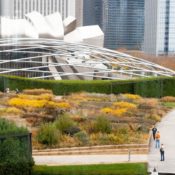Author: Alice Webb
What is Landscape Architecture?
I’m often hesitant to tell people that I’m a landscape architect. It’s not because I have anything to hide – it’s due to the misconception that comes with the title. What is landscape architecture? People tend to hear the word “landscape” and ignore the “architect” that follows. Reactions often range from “you should look at my yard” to “winter must be your slow season”. I tend to cringe at most responses, but politely try to explain what I do. I think that removing the word “landscape” from the title and substituting it with something else, such as “site”, would do a lot to avoid confusion, but the ASLA isn’t about to alter a name used since the 1800s. We therefore need to keep educating the public about landscape architecture, in any way that we can.
In the meantime, I have started to tell people that I’m a type of architect that designs outdoor spaces. I then let them know that we are called landscape architects but our work isn’t limited to planting design, and that the vast majority of us do not perform any construction or installation. I also let them know that all 50 U.S. states require licensure for landscape architects, due to our impact on the public’s health, safety, and welfare.
Landscape architecture is a very broad field. The scale of work can range from very small spaces to entire regions, and the scope of design and planning can also vary widely. Examples of landscape architectural projects can include parks/recreation sites and facilities; streetscapes and other urban spaces; green infrastructure/storm water management; office and commercial sites; academic and corporate campuses; housing developments; hotel facilities and resorts; residential properties; green roofs; landscape art and earth sculpture; hospital grounds and therapeutic gardens; historic preservation; environmental restoration; transportation corridors and facilities; and urban/regional planning.
A landscape architect’s design work often begins with analysis of an existing site, followed by the design of schematic plans for the property. We later design and produce construction drawings and specifications, which contractors will follow to build/install our designs. Our construction drawings typically include, at minimum, the layout and specification of site features (such as walkways, parking areas, structures, and athletic facilities); grading and storm drainage design; a planting plan; and construction detailing.
I find it ironic that a profession having such a large and beneficial impact on the public is so misunderstood. I hope that significant progress is made to dispel its myths before too long. It would be nice to tell people that I’m a landscape architect and typically get responses like this: “Great – What types of projects do you design?”
What are your thoughts on our misunderstood profession? Let us know in the comments below!
This blog post first appeared on Land Perspectives.
Images via Landscape Voice





